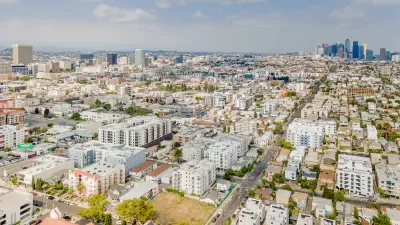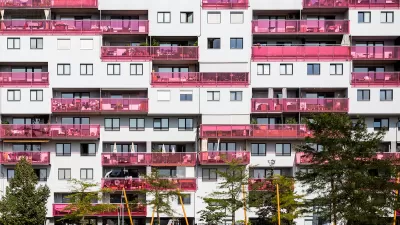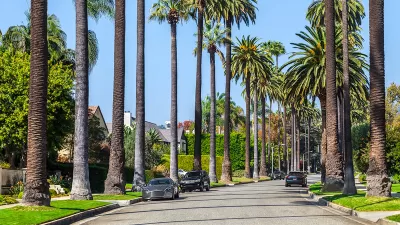The tax on property sales above $5 million has brought in less revenue last year than experts projected, but the measure could still become a significant contributor to affordable housing funds.

A so-called ‘mansion tax’ in Los Angeles that taxes land transactions over $5 million to raise funds for affordable housing and other housing programs has brought in less revenue than expected, reports Sarah Holder in Bloomberg CityLab.
According to Holder, Measure ULA has brought in just $142 million, short of the $900 million in annual projected revenue. “As the housing market stabilizes, the real estate industry adapts, and various lawsuits move through the appeals process, advocates say the tax will prove its worth. By November, monthly sales over $5 million had nearly tripled since cratering in April, bringing in nearly $14 million for Measure ULA.”
Holder notes that “Although single-family homes represent the largest share of its projected revenue at 38%, the tax also applies to most multifamily developments, office buildings and hotels.” Some developers say this will hamstring the construction of multifamily apartment buildings, including affordable housing. “A 2022 UCLA study somewhat assuaged concerns about affordable housing, suggesting that the tax would have little impact on multifamily construction, in part because developers rarely sell their properties right after building them.”
Despite the backlash, “Already, 19 affordable housing projects with a total of 1,500 units have applied for a piece of the $56.8 million in Measure ULA funding available. Short-term rental assistance has started going out to tenants and landlords.” And other cities are proposing their own mansion taxes, including Santa Fe, Chicago, and Seattle.
FULL STORY: As ‘Mansion Taxes’ Catch On in US Cities, Los Angeles Offers Lessons

Study: Maui’s Plan to Convert Vacation Rentals to Long-Term Housing Could Cause Nearly $1 Billion Economic Loss
The plan would reduce visitor accommodation by 25,% resulting in 1,900 jobs lost.

North Texas Transit Leaders Tout Benefits of TOD for Growing Region
At a summit focused on transit-oriented development, policymakers discussed how North Texas’ expanded light rail system can serve as a tool for economic growth.

Using Old Oil and Gas Wells for Green Energy Storage
Penn State researchers have found that repurposing abandoned oil and gas wells for geothermal-assisted compressed-air energy storage can boost efficiency, reduce environmental risks, and support clean energy and job transitions.

Santa Barbara Could Build Housing on County Land
County supervisors moved forward a proposal to build workforce housing on two county-owned parcels.

San Mateo Formally Opposes Freeway Project
The city council will send a letter to Caltrans urging the agency to reconsider a plan to expand the 101 through the city of San Mateo.

A Bronx Community Fights to Have its Voice Heard
After organizing and giving input for decades, the community around the Kingsbridge Armory might actually see it redeveloped — and they want to continue to have a say in how it goes.
Urban Design for Planners 1: Software Tools
This six-course series explores essential urban design concepts using open source software and equips planners with the tools they need to participate fully in the urban design process.
Planning for Universal Design
Learn the tools for implementing Universal Design in planning regulations.
Ascent Environmental
Borough of Carlisle
Institute for Housing and Urban Development Studies (IHS)
City of Grandview
Harvard GSD Executive Education
Toledo-Lucas County Plan Commissions
Salt Lake City
NYU Wagner Graduate School of Public Service





























